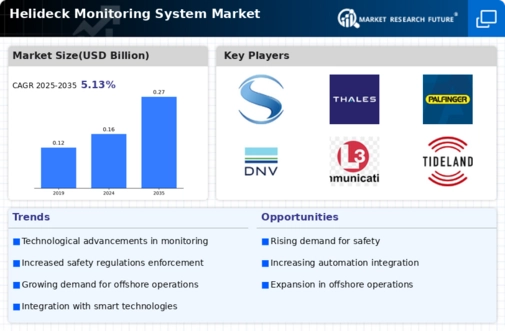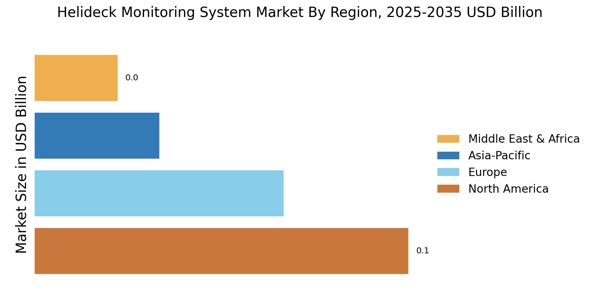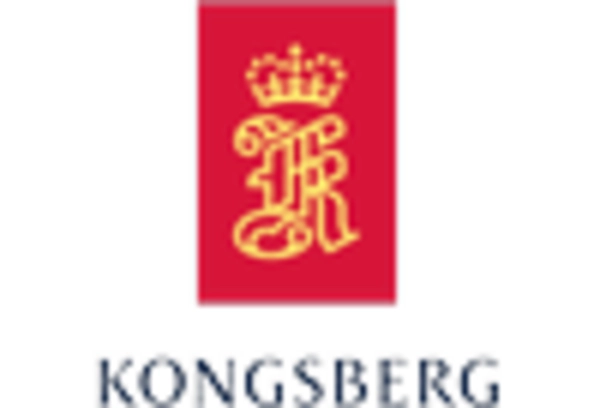Increased Demand for Offshore Operations
The Helideck Monitoring System Market is witnessing a notable increase in demand for offshore operations, particularly in sectors such as oil and gas, wind energy, and maritime transport. As these industries expand their operations into remote areas, the need for reliable and efficient helideck monitoring systems becomes paramount. Offshore platforms require robust monitoring solutions to ensure safe helicopter landings and takeoffs, which are critical for personnel transport and emergency evacuations. Market data indicates that the offshore oil and gas sector alone is projected to invest over 2 billion dollars in helideck monitoring systems by 2027, underscoring the growing importance of these systems in ensuring operational safety and efficiency.
Regulatory Compliance and Safety Standards
The Helideck Monitoring System Market is significantly influenced by stringent regulatory compliance and safety standards imposed by aviation authorities. These regulations mandate the implementation of advanced monitoring systems to ensure the safety of helicopter operations, particularly in offshore environments. Compliance with these regulations is not merely a legal obligation; it is also a critical factor in maintaining operational licenses. As a result, companies are increasingly investing in sophisticated monitoring systems to meet these requirements. The market is expected to grow as more operators recognize the necessity of adhering to safety standards, with estimates suggesting a potential increase in market size by 15% over the next five years due to heightened regulatory scrutiny.
Growing Awareness of Safety and Risk Management
The Helideck Monitoring System Market is experiencing a growing awareness of safety and risk management among stakeholders in the aviation sector. As incidents related to helicopter operations can have severe consequences, there is an increasing emphasis on implementing comprehensive monitoring systems to mitigate risks. Operators are becoming more cognizant of the need for robust safety protocols, which include the use of advanced helideck monitoring systems. This heightened awareness is driving demand for systems that can provide accurate and timely data on environmental conditions and operational parameters. Market trends suggest that this focus on safety will continue to grow, potentially leading to a 10% increase in market demand for helideck monitoring systems over the next few years.
Focus on Operational Efficiency and Cost Reduction
The Helideck Monitoring System Market is increasingly driven by the focus on operational efficiency and cost reduction among helicopter operators. Companies are seeking ways to optimize their operations, reduce downtime, and minimize costs associated with maintenance and safety. Advanced monitoring systems provide real-time insights that enable operators to make informed decisions, thereby enhancing overall operational efficiency. By implementing these systems, operators can potentially reduce operational costs by up to 20%, as they allow for proactive maintenance and timely interventions. This emphasis on efficiency is likely to propel the growth of the Helideck Monitoring System Market as more operators recognize the financial benefits of investing in advanced monitoring technologies.
Technological Advancements in Helideck Monitoring Systems
The Helideck Monitoring System Market is experiencing a surge in technological advancements, which are enhancing the safety and efficiency of helicopter operations. Innovations such as real-time data analytics, advanced sensor technologies, and automated monitoring systems are becoming increasingly prevalent. These technologies enable operators to monitor environmental conditions, such as wind speed and direction, in real-time, thereby improving decision-making processes. According to recent data, the integration of artificial intelligence and machine learning into monitoring systems is projected to increase operational efficiency by up to 30% over the next few years. This trend not only enhances safety but also reduces operational costs, making it a compelling driver for the Helideck Monitoring System Market.


















Leave a Comment